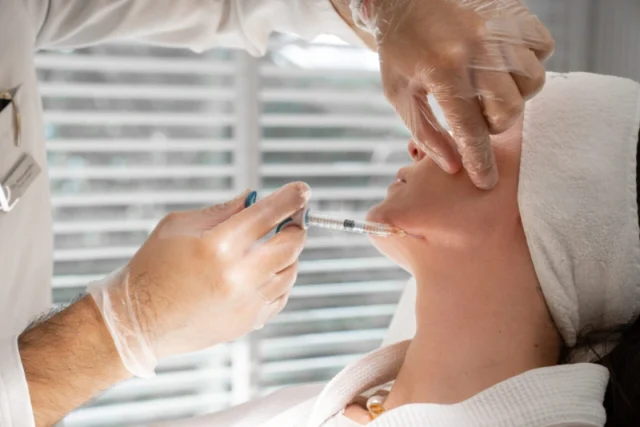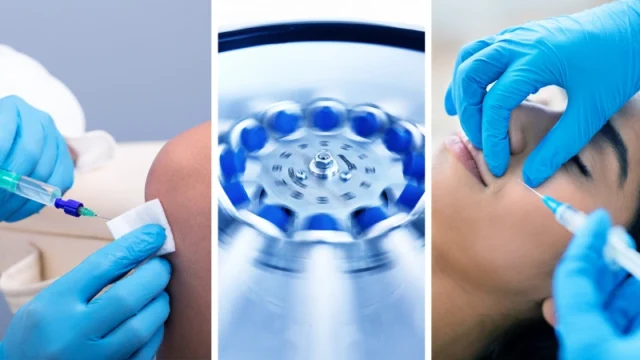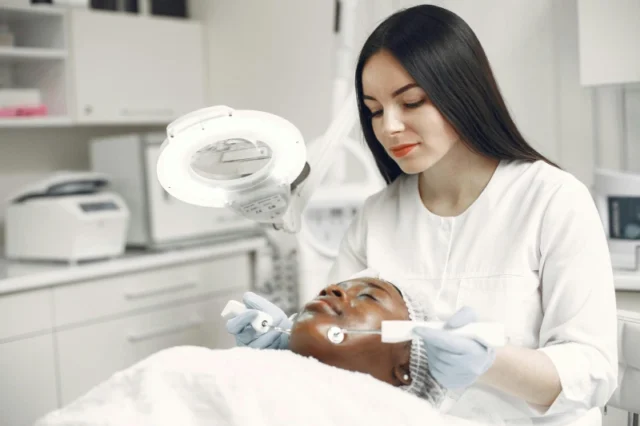In recent years, Turkey has emerged as a leading destination for aesthetic and regenerative medicine, predominantly fueled by advancements in stem cell therapy. This cutting-edge approach harnesses the body’s natural healing potential, offering transformative treatments that go beyond traditional methods. From rejuvenating skin to restoring lost vitality, stem cell therapy is revolutionizing how we perceive and achieve beauty and wellness. With a blend of innovative technology and expert practitioners, Turkey stands at the forefront of this medical evolution, attracting individuals seeking effective solutions for both aesthetic enhancements and health improvements. In this article, we will explore the role of stem cell therapy in these fields, delving into its benefits, applications, and the remarkable ways it is shaping the future of medicine in Turkey. Join us on this journey to uncover how stem cell therapy is not just a trend but a pivotal change in aesthetic and regenerative practices, enhancing lives one treatment at a time.
The Role of Stem Cell Therapy in Aesthetic and Regenerative Medicine in Turkey
In recent years, Turkey has emerged as a leading destination for aesthetic and regenerative medicine, predominantly fueled by advancements in stem cell therapy. This cutting-edge approach harnesses the body’s natural healing potential, offering transformative treatments that go beyond traditional methods. From rejuvenating skin to restoring lost vitality, stem cell therapy is revolutionizing how we perceive and achieve beauty and wellness. With a blend of innovative technology and expert practitioners, Turkey stands at the forefront of this medical evolution, attracting individuals seeking effective solutions for both aesthetic enhancements and health improvements. In this article, we will explore the role of stem cell therapy in these fields, delving into its benefits, applications, and the remarkable ways it is shaping the future of medicine in Turkey. Join us on this journey to uncover how stem cell therapy is not just a trend but a pivotal change in aesthetic and regenerative practices, enhancing lives one treatment at a time.
Overview of Aesthetic and Regenerative Medicine
Aesthetic medicine primarily focuses on improving cosmetic appearance through treatments that address various conditions such as scars, skin laxity, wrinkles, moles, liver spots, excess fat, cellulite, unwanted hair, skin discoloration, and spider veins. These treatments are often elective, enhancing one’s appearance and self-esteem. With the advancement of medical technology, the methods and outcomes of aesthetic treatments have dramatically improved, leading to a surge in their popularity.
Regenerative medicine, on the other hand, is a branch of medicine that aims to repair, replace, or regenerate damaged tissues and organs. It often involves the use of stem cells, tissue engineering, and the production of artificial organs. The objective is to restore normal function by harnessing the body’s healing capabilities. This field has gained significant traction due to its potential to treat previously untreatable conditions, offering hope for a better quality of life for many individuals.
Combining these two fields, stem cell therapy in aesthetic and regenerative medicine represents a new frontier. It leverages the regenerative power of stem cells to not only enhance physical appearance but also to treat various medical conditions. The integration of these disciplines in Turkey has been particularly notable, with the country becoming a hub for innovative and effective treatments. This combination has attracted many international patients seeking high-quality care and advanced medical procedures.
Types of Stem Cells Used in Therapy
Stem cells are unique in their ability to differentiate into various cell types and their potential to regenerate damaged tissues. There are several types of stem cells used in therapy, each with distinct properties and applications. Understanding these differences is crucial for grasping the full potential of stem cell therapy in aesthetic and regenerative medicine.
Embryonic stem cells (ESCs) are derived from early-stage embryos and have the highest differentiation potential, meaning they can develop into any cell type in the body. However, the use of ESCs is surrounded by ethical controversies and regulatory restrictions, limiting their application in clinical settings.
Adult stem cells, also known as somatic or tissue-specific stem cells, are found in various tissues throughout the body, including bone marrow, fat, and skin. These cells are multipotent, meaning they can differentiate into a limited range of cell types related to their tissue of origin. For instance, mesenchymal stem cells (MSCs) from bone marrow or adipose tissue can develop into bone, cartilage, and fat cells. Adult stem cells are commonly used in both aesthetic and regenerative treatments due to their accessibility and fewer ethical concerns.
Induced pluripotent stem cells (iPSCs) are adult cells that have been genetically reprogrammed to an embryonic stem cell-like state. This process allows them to differentiate into any cell type, similar to ESCs, while avoiding the ethical issues associated with harvesting embryonic cells. iPSCs hold great promise for personalized medicine and have been a major focus of research in regenerative therapies.
Benefits of Stem Cell Therapy in Aesthetics
Stem cell therapy has revolutionized the field of aesthetic medicine by offering innovative solutions that go beyond traditional cosmetic procedures. One of the most significant benefits is the natural rejuvenation of the skin. Stem cells can stimulate the production of collagen and elastin, essential proteins for maintaining skin elasticity and firmness. This leads to a reduction in wrinkles and fine lines, giving the skin a youthful and vibrant appearance.
Another advantage of stem cell therapy is its ability to repair and regenerate damaged tissues. For individuals with scars or skin damage from acne, injuries, or surgeries, stem cell treatments can significantly improve the appearance and texture of the skin. The regenerative properties of stem cells promote healing from within, resulting in smoother and more even skin.
Furthermore, stem cell therapy offers long-lasting results compared to traditional aesthetic treatments. While procedures such as Botox or dermal fillers require regular maintenance, the regenerative effects of stem cells can provide sustained improvements. This is particularly appealing to patients seeking more permanent solutions to their aesthetic concerns.
Applications of Stem Cell Therapy in Regenerative Medicine
In regenerative medicine, stem cell therapy has shown remarkable potential in treating a wide range of medical conditions. One of the most groundbreaking applications is in the field of orthopedics. Stem cell treatments can help repair damaged cartilage, tendons, and bones, offering relief for individuals suffering from chronic joint pain, osteoarthritis, and sports injuries. This approach not only alleviates pain but also promotes the restoration of normal function, reducing the need for invasive surgeries.
Cardiovascular diseases, a leading cause of mortality worldwide, have also seen promising advancements through stem cell therapy. Researchers have been exploring the use of stem cells to regenerate damaged heart tissue following a heart attack. Preliminary studies have shown that stem cell treatments can improve heart function and reduce the extent of damage, potentially transforming the management of cardiovascular conditions.
Neurological disorders, such as Parkinson’s disease, multiple sclerosis, and spinal cord injuries, represent another area where stem cell therapy is making significant strides. Stem cells have the ability to differentiate into various neural cells, offering hope for repairing and regenerating damaged neurons. Although this field is still in its early stages, the potential for stem cells to restore neurological function is a beacon of hope for patients with debilitating conditions.
The Growing Market for Stem Cell Therapy in Turkey
Turkey has rapidly become a prominent player in the global market for stem cell therapy, driven by a combination of advanced medical infrastructure, skilled practitioners, and competitive pricing. The country’s strategic location at the crossroads of Europe and Asia has made it an attractive destination for medical tourism, drawing patients from around the world seeking high-quality treatments at affordable costs.
One of the key factors contributing to the growth of the stem cell therapy market in Turkey is the government’s support and investment in healthcare. Significant funding has been allocated to research and development, fostering innovation and the adoption of cutting-edge medical technologies. This has enabled Turkish clinics and hospitals to offer state-of-the-art stem cell treatments, positioning the country as a leader in this field.
In addition to the economic advantages, Turkey boasts a robust regulatory framework that ensures the safety and efficacy of stem cell therapies. The Ministry of Health closely monitors and regulates medical practices, maintaining high standards of care and patient safety. This regulatory oversight has helped build trust and confidence among international patients, further boosting the market’s growth.
Regulatory Framework and Ethical Considerations
The regulatory framework governing stem cell therapy in Turkey is designed to ensure the highest standards of safety, efficacy, and ethical practices. The Ministry of Health plays a central role in overseeing the approval and monitoring of stem cell treatments, ensuring that all procedures meet stringent criteria. This includes the evaluation of clinical trials, the accreditation of medical facilities, and the certification of healthcare professionals involved in stem cell therapy.
Ethical considerations are paramount in the field of stem cell therapy, particularly concerning the source and use of stem cells. In Turkey, the use of embryonic stem cells is heavily regulated, and research involving these cells must adhere to strict ethical guidelines. The focus has largely shifted towards the use of adult stem cells and induced pluripotent stem cells, which present fewer ethical dilemmas and have shown significant promise in clinical applications.
Informed consent is another critical aspect of ethical practice in stem cell therapy. Patients must be fully informed about the potential risks, benefits, and alternatives to the proposed treatment. This transparency ensures that patients can make educated decisions about their healthcare and reinforces the trust between patients and medical practitioners.
Case Studies: Success Stories in Turkey
To illustrate the transformative impact of stem cell therapy in Turkey, it is essential to highlight some success stories that demonstrate the effectiveness of these treatments. One notable case involves a middle-aged woman suffering from severe osteoarthritis in her knees. Traditional treatments had offered little relief, and she faced the prospect of knee replacement surgery. However, after undergoing stem cell therapy, she experienced significant pain reduction and improved mobility, allowing her to return to her active lifestyle without the need for invasive surgery.
Another inspiring example is that of a young man with a spinal cord injury resulting from a car accident. He had lost sensation and movement in his lower limbs, and conventional treatments had limited success in restoring function. Through stem cell therapy, he received injections of stem cells that promoted neural regeneration and repair. Over time, he regained partial movement and sensation, significantly improving his quality of life and independence.
Aesthetic applications of stem cell therapy have also yielded remarkable results. A woman in her fifties sought treatment for facial rejuvenation. Traditional cosmetic procedures had provided temporary improvements, but she desired a more lasting solution. Stem cell therapy stimulated the production of collagen and elastin, resulting in firmer, more youthful skin. The natural-looking results exceeded her expectations, enhancing both her appearance and confidence.
Choosing the Right Clinic for Stem Cell Therapy
Selecting the right clinic for stem cell therapy is crucial to ensure the safety and effectiveness of the treatment. Patients should consider several factors when making this decision, including the clinic’s reputation, the qualifications of the medical team, and the range of services offered. Researching and reading reviews from previous patients can provide valuable insights into the clinic’s track record and patient satisfaction.
The expertise and qualifications of the medical practitioners are paramount. Patients should seek clinics with healthcare professionals who have specialized training and experience in stem cell therapy. Board certification and membership in relevant professional organizations can also indicate a practitioner’s commitment to maintaining high standards of care.
Additionally, patients should inquire about the clinic’s facilities and technologies. State-of-the-art equipment and adherence to international standards of hygiene and safety are essential for successful outcomes. Clinics that invest in the latest medical technologies and follow best practices are more likely to deliver high-quality treatments.
Future Trends in Stem Cell Therapy in Turkey
The future of stem cell therapy in Turkey looks promising, with ongoing research and advancements paving the way for new and innovative treatments. One of the most exciting trends is the development of personalized stem cell therapies. By using a patient’s own cells, clinicians can create customized treatments that are tailored to the individual’s unique genetic makeup and medical condition. This approach holds the potential for higher efficacy and reduced risk of adverse reactions.
Another emerging trend is the integration of stem cell therapy with other regenerative techniques, such as gene therapy and tissue engineering. Combining these modalities can enhance the regenerative capacity of treatments, offering more comprehensive solutions for complex medical conditions. This multidisciplinary approach is likely to expand the range of treatable conditions and improve patient outcomes.
The use of artificial intelligence and machine learning in stem cell research is also on the rise. These technologies can analyze vast amounts of data to identify patterns and predict treatment outcomes, accelerating the development of new therapies. By harnessing the power of AI, researchers can optimize stem cell treatments and bring them to clinical application more efficiently.
In conclusion, stem cell therapy is playing a pivotal role in the advancement of aesthetic and regenerative medicine in Turkey. The country’s commitment to innovation, ethical practices, and high standards of care has positioned it as a leader in this field. As research and technology continue to evolve, stem cell therapy will undoubtedly offer even more transformative solutions, enhancing the lives of patients and shaping the future of medicine.






